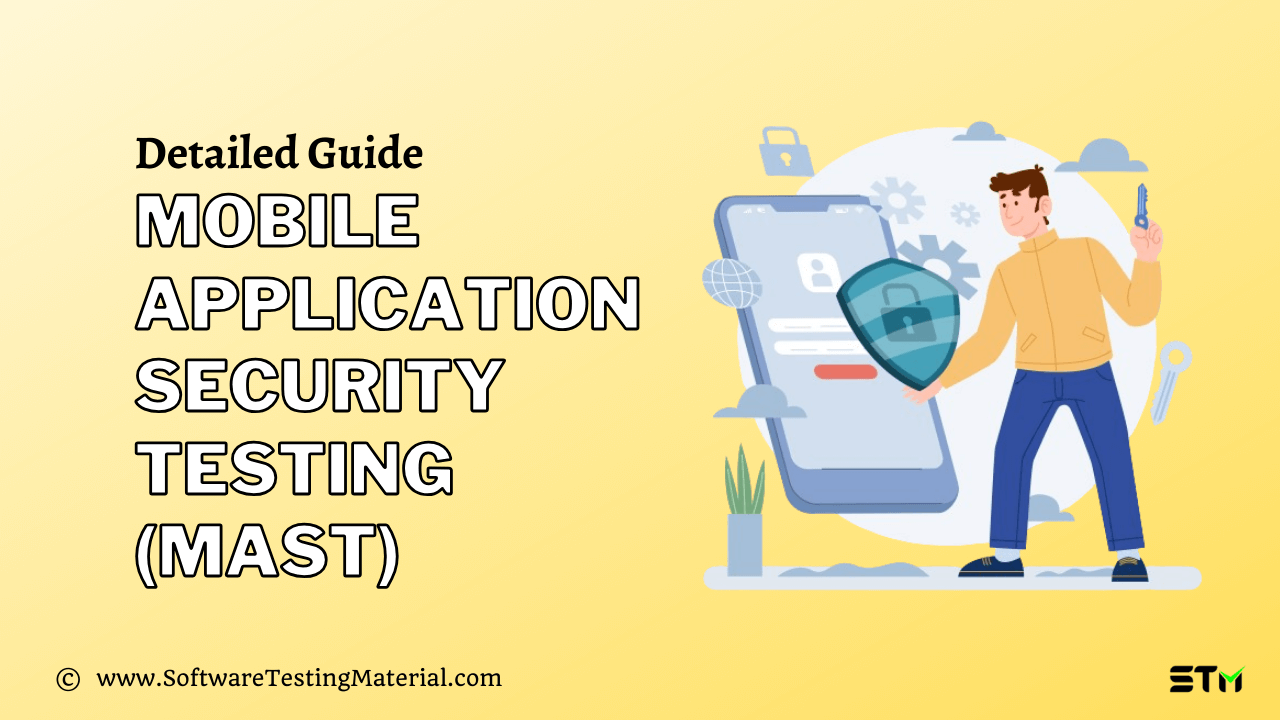Mobile Application Security Testing (MAST) | Detailed Guide
Mobile Application Security Testing is an essential component in the creation and maintenance of secure mobile applications.
In today’s rapidly evolving digital landscape, ensuring security has become more critical than ever. The constant evolution of threats to privacy and data necessitates a proactive approach to safeguarding sensitive information. Fortunately, advancements in technology have paved the way for more effective security measures.
One area that has seen significant progress is the development of automated tools and security testing methodologies. They provide comprehensive frameworks for analyzing applications systematically, like the technique known as mobile application security testing (MAST).
In this guide, we will discuss what is Mobile Application Security Testing (MAST), the importance of MAST, and the associated challenges.
By understanding these concepts, individuals and organizations can stay ahead of the curve and ensure the integrity and confidentiality of their digital assets.

What Is Mobile Application Security Testing (MAST)
Mobile Application Security Testing (MAST) is a process aimed at probing and uncovering potential vulnerabilities in mobile applications. This process shares similarities with web application testing but with a specific focus on the unique aspects of mobile platforms. MAST examines areas such as data security, authentication, session management, and system-specific issues (like Android intents or iOS URL schemes). The goal is to help developers address security concerns before an application is launched, thereby ensuring the protection of user data and preserving the integrity of the application.
The Importance of MAST
Mobile Application Security Testing (MAST) plays a crucial role in creating a robust and secure mobile application. This comprehensive process involves thorough testing to identify potential vulnerabilities and ensure compliance with stringent security standards.
By doing so, MAST protects sensitive data from being compromised, safeguarding user privacy and mitigating the risk of legal and financial consequences.
The importance of MAST cannot be overstated, as app vulnerabilities can potentially expose not only user data but also compromise the entire smartphone if exploited by hackers. Unauthorized access to contacts, photos, location data, and online banking credentials poses significant risks to individuals and organizations alike.
Without proper testing, it becomes challenging to identify potential vulnerabilities that hackers could exploit in the code.
Through proactive testing, MAST serves as an effective defense strategy, enabling developers to detect and address security flaws before they become exploitable weaknesses. By consolidating user trust through data privacy and security, MAST not only enhances the overall user experience but also ensures compliance with regulatory requirements. This, in turn, helps mitigate potential legal and financial risks, providing peace of mind to both developers and end-users.
In summary, Mobile Application Security Testing (MAST) is a critical aspect of mobile application development that goes beyond simple functionality testing. It ensures the highest level of security, protects sensitive data, and ultimately contributes to a safer and more secure mobile app ecosystem.
Performing Mobile Application Security Testing
Following are the steps involved in mobile application security testing.
#1. Defining a Goal
It is crucial to clearly establish the objectives and areas of focus for the testing. This includes determining the specific functionalities, components, and potential vulnerabilities that need to be thoroughly examined to ensure the overall security of the application.
#2. Analyzing for Threats
In this step, a comprehensive review of the application’s architecture and external interactions is conducted. This analysis aims to identify potential risks and vulnerabilities that may arise from the design, implementation, or integration of various components. By understanding the underlying threats, it becomes possible to develop a robust testing strategy that covers all critical areas.
#3. Validating Risks
Once potential threats have been identified, they are further investigated through penetration testing. This involves actively exploiting the identified threats to determine if they are actual vulnerabilities. By simulating real-world attack scenarios, the effectiveness of existing security measures can be evaluated, and any weaknesses or vulnerabilities can be uncovered.
#4. Remediation
After identifying and validating vulnerabilities, the next step is to prioritize and address them. This involves implementing appropriate measures to enhance application security, such as patching software vulnerabilities, updating configurations, or improving access controls. The goal is to mitigate the identified risks and strengthen the overall security posture of the application, ensuring that it remains resilient against potential attacks.
Challenges in Mobile Application Security Testing
Here are the challenges of mobile app security testing.
- Inadequate expertise: Many developers lack sufficient skills to test mobile application security, leading to overlooked vulnerabilities.
- Fragmentation of OS: With multiple versions of operating systems in use, ensuring compatibility and security across all platforms is challenging.
- Rapid technological advancements: The fast pace of technology evolution makes it difficult to keep up with emerging security threats.
- Limited resources and time: Often, security testing is sacrificed due to project constraints, such as tight deadlines and budget restrictions.
- Data leakage: Protecting sensitive user data is a significant challenge, especially when applications request and store a large amount of personal information.
- Use of insecure third-party libraries: These libraries can introduce vulnerabilities into the mobile application
Conclusion
In conclusion, Mobile Application Security Testing (MAST) is an indispensable part of the application development process. It ensures the detection and rectification of vulnerabilities, preserves user trust, and adheres to compliance standards. The continuous evolution of cyber threats necessitates a proactive and comprehensive approach to security testing, safeguarding mobile applications from potential breaches and instilling confidence among users regarding data safety.
Related posts:
- Best Dynamic Application Security Testing (DAST) Software
- Best Vulnerability Assessment Scanning Tools
- Best Penetration Testing Companies
- Best Nessus Alternatives
- Best Burp Suite Alternatives
- Best Penetration Testing Tools
- Penetration Testing Guide
- Best Security Testing Tools
- Best Web Application Testing Tools






